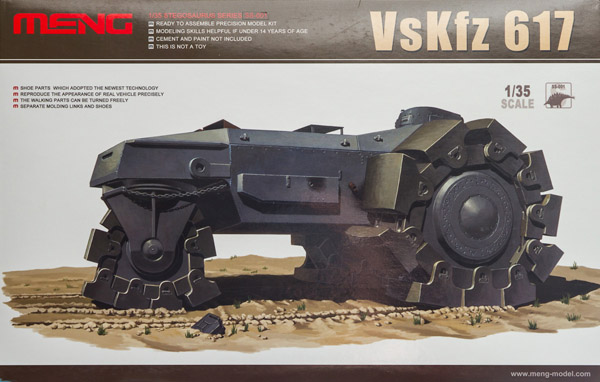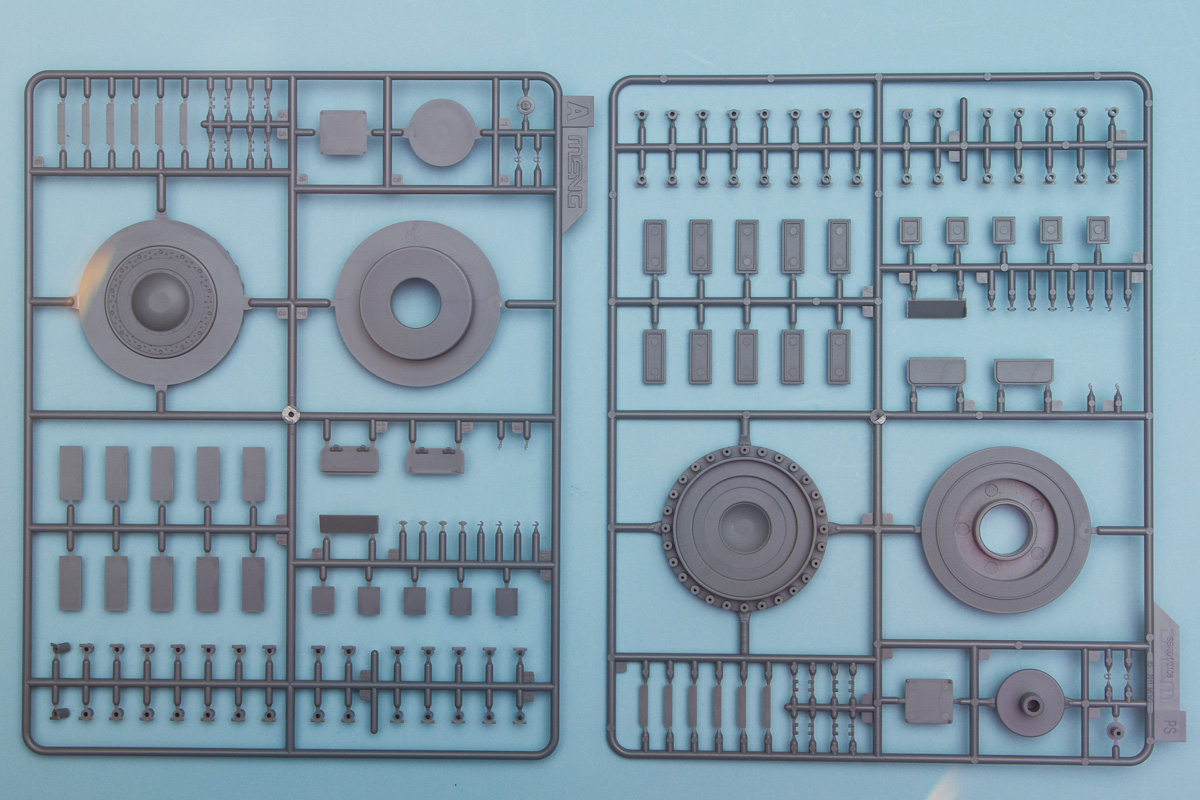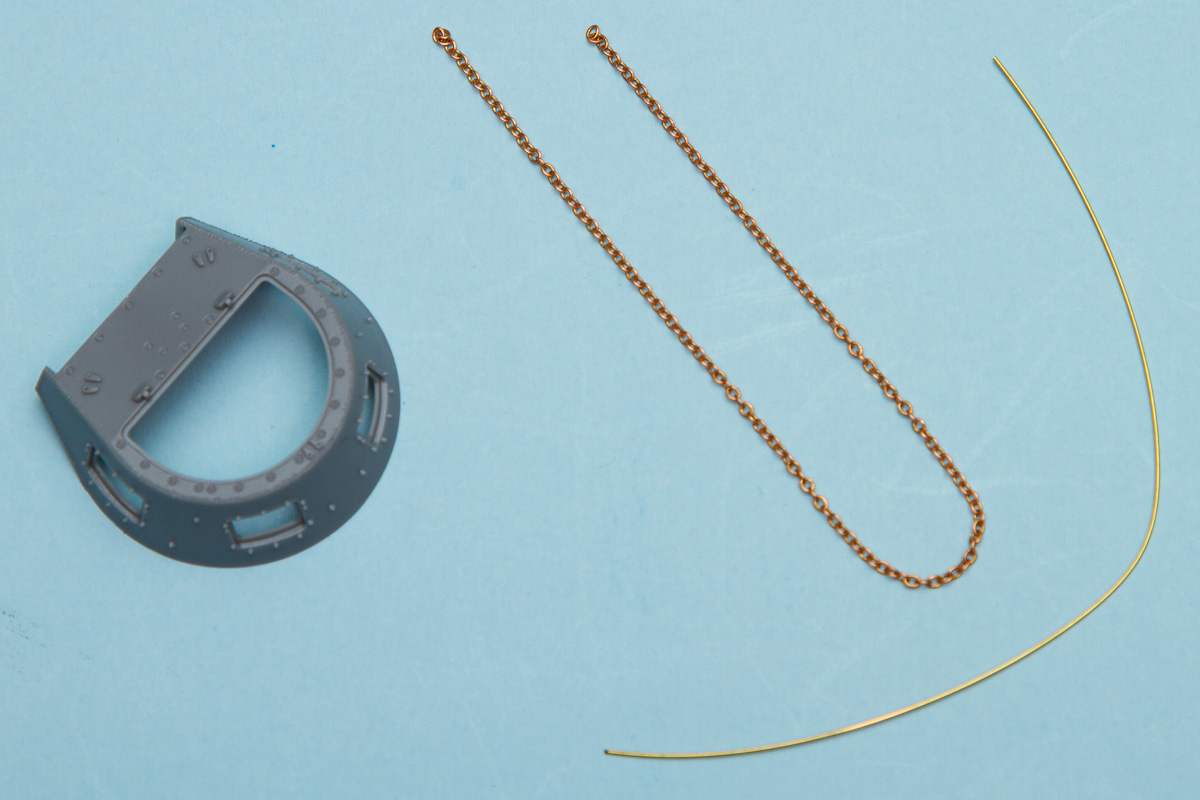
Meng 1/35 VsKfz 617 Minenräumer
By Chris Banyai-Riepl
Overview
Designed as a lunar assault vehicle in 2130, the VsKfz 617 was.... All right, that's not entirely true, but this vehicle definitely looks the part. In actuality, the vehicle was designed by Alkett, Krupp, and Mercedes-Benz in the early 1940s as a minesweeper. The vehicle featured heavy armor plating to protect the occupants from exploding mines, while the massive wheels were fitted with large and heavy shoes that would provide the strong ground pressure to detonate the mines. For close defense, the Ausf B variant featured a turret from a Panzer I tank with its two machine guns. Trial tests revealed (unsurprisingly) that the vehicle was large, heavy and slow, which made it an easy target for enemy artillery. As such, the program was halted.
Advancing Soviet troops in 1945 came across one of these vehicles and captured it, returning it to the Soviet Union where it underwent testing. That vehicle now resides at the Kubinka Museum outside of Moscow, and remains the only existing example of this odd vehicle.
The Kit
While this is not the first 1/35 kit of this odd minesweeper, I believe it is the first in injection plastic. The kit is molded in a medium gray plastic, with a couple pieces of metal for detail (chain and wire). There are no decals, but the instructions provide information for four different color schemes.
 Construction begins with the main body. This is split into an upper and lower piece, both of which are nicely done. The lower hull has excellent weld detail, while the upper piece features some molded on hatches with crisp detailing. There are five large hatches on the upper hull that are molded separately, and their hinges are also molded separately. There are hooks along the side of the vehicle, and these are provided in two pieces: a hook and a mounting plate. This seems somewhat complex, but it ensures crisp detailing and shouldn't be too tough to clean up and apply all seven.
Construction begins with the main body. This is split into an upper and lower piece, both of which are nicely done. The lower hull has excellent weld detail, while the upper piece features some molded on hatches with crisp detailing. There are five large hatches on the upper hull that are molded separately, and their hinges are also molded separately. There are hooks along the side of the vehicle, and these are provided in two pieces: a hook and a mounting plate. This seems somewhat complex, but it ensures crisp detailing and shouldn't be too tough to clean up and apply all seven.
 Back at the upper hull hatches, two of these hatches are louvered, with separate armor plating on top of the louvers. These hatches are assembled from a single lower piece, separate louver blades, and a separate armor plate piece. When finished, these hatches will look superb. The underside of the hull gets some add-on detailing, but realistically, this entire hull assembly could go together in a day. There just isn't much in the way of extra bits and pieces.
Back at the upper hull hatches, two of these hatches are louvered, with separate armor plating on top of the louvers. These hatches are assembled from a single lower piece, separate louver blades, and a separate armor plate piece. When finished, these hatches will look superb. The underside of the hull gets some add-on detailing, but realistically, this entire hull assembly could go together in a day. There just isn't much in the way of extra bits and pieces.
 The wheels are very impressive. There is really no other way to describe them. The large main wheels are made up of three pieces: two large wheel parts and a center plug. This should result in a wheel that can be rotated when finished. The massive shoes are massive in more ways than one, in that they actually have metal embedded in the one-piece injection plastic part. This gives the shoe some weight and should help them hang accurately off the wheel. The assembly is fairly simple, with the individual links meshing together, the shoe fitting over the link, and two hinge pins securing the foot and links together. With careful gluing, this whole assembly will be functional. A similar arrangement makes up the single smaller steering wheel, which is trapped between a two-piece fork. The steering for that wheel is done via a chain on each side, which is provided in copper, with a piece of brass wire to secure it to the fork.
The wheels are very impressive. There is really no other way to describe them. The large main wheels are made up of three pieces: two large wheel parts and a center plug. This should result in a wheel that can be rotated when finished. The massive shoes are massive in more ways than one, in that they actually have metal embedded in the one-piece injection plastic part. This gives the shoe some weight and should help them hang accurately off the wheel. The assembly is fairly simple, with the individual links meshing together, the shoe fitting over the link, and two hinge pins securing the foot and links together. With careful gluing, this whole assembly will be functional. A similar arrangement makes up the single smaller steering wheel, which is trapped between a two-piece fork. The steering for that wheel is done via a chain on each side, which is provided in copper, with a piece of brass wire to secure it to the fork.
 The final assembly piece is the turret. This has a nicely detailed three-piece mantlet, with separate gun barrels. The one-piece turret features several separate side hatches, as well as a separate top hatch. This fits onto the upper hull, and in looking at this assembly, I can only hope that Meng builds on this and comes out with a full Panzer I kit. They've got the turret done, so why not, right?
The final assembly piece is the turret. This has a nicely detailed three-piece mantlet, with separate gun barrels. The one-piece turret features several separate side hatches, as well as a separate top hatch. This fits onto the upper hull, and in looking at this assembly, I can only hope that Meng builds on this and comes out with a full Panzer I kit. They've got the turret done, so why not, right?
 For colors and markings, all of these are purely speculative and are based on other German vehicles of the period. There is an overall Panzer gray option and an overall dark yellow option, which is probably the most accurate for the few examples that were built. More speculative is the dark yellow with khaki green squiggles painted disruptively over the vehicle. The most interesting, at least to me, shows the vehicle in dark yellow with diagonal stripes of khaki green and red brown. From a speculative viewpoint, the sky's the limit with this kit, and one could go with a temporary white distemper winter camouflage, or even an unpainted rusty steel look, complete with chalk marks. There is no end to interesting ideas for this one.
For colors and markings, all of these are purely speculative and are based on other German vehicles of the period. There is an overall Panzer gray option and an overall dark yellow option, which is probably the most accurate for the few examples that were built. More speculative is the dark yellow with khaki green squiggles painted disruptively over the vehicle. The most interesting, at least to me, shows the vehicle in dark yellow with diagonal stripes of khaki green and red brown. From a speculative viewpoint, the sky's the limit with this kit, and one could go with a temporary white distemper winter camouflage, or even an unpainted rusty steel look, complete with chalk marks. There is no end to interesting ideas for this one.
Conclusion
For those looking for something very different in their armor collection, this one definitely fits the bill. While the oddity of the subject will definitely turn heads, the quality of the kit will be even more attractive to the modeler. This is one that looks to be quite easy and fun to build, making it a great diversion from those more complicated builds. My thanks to Stevens International for the review sample.
